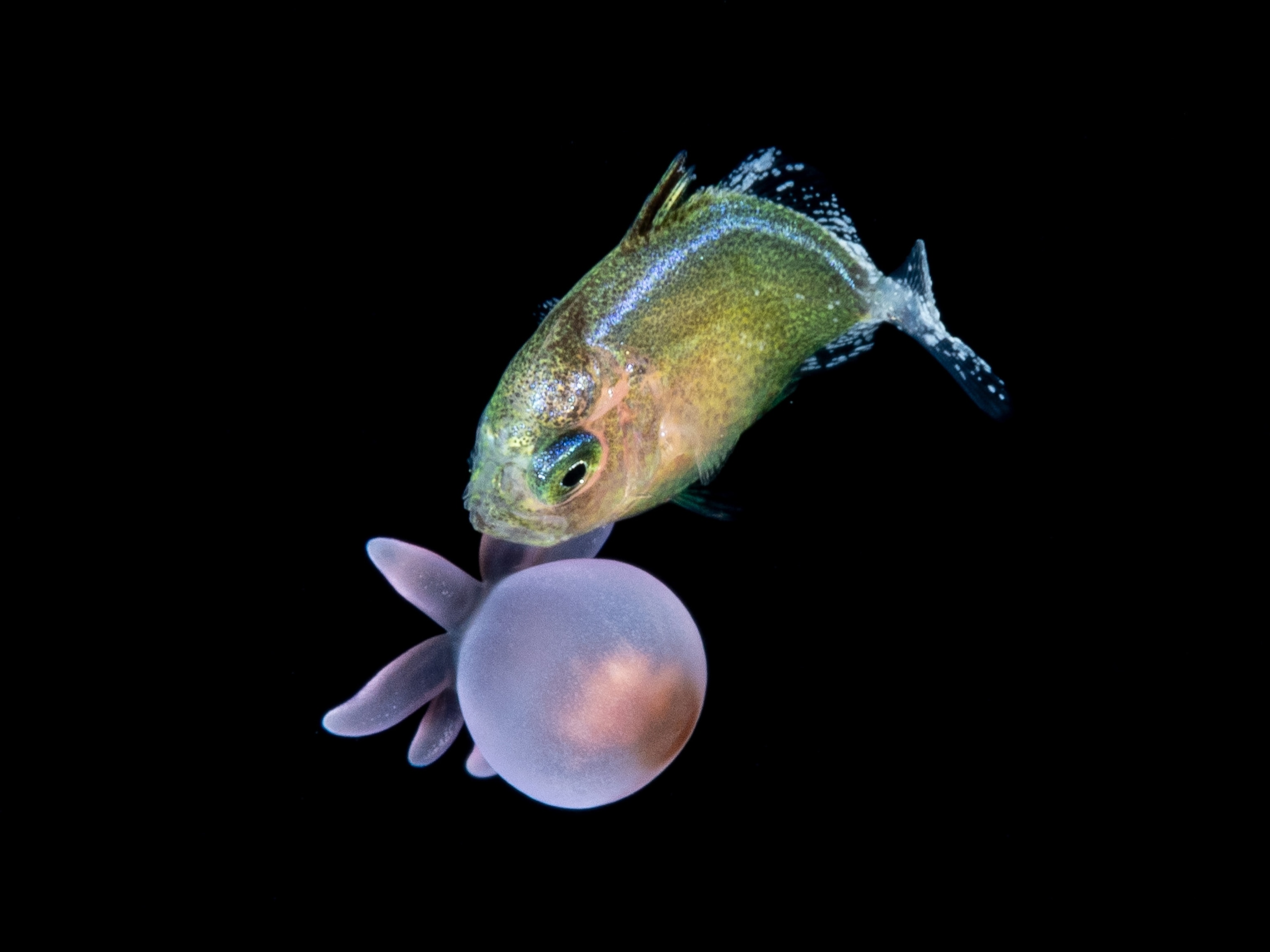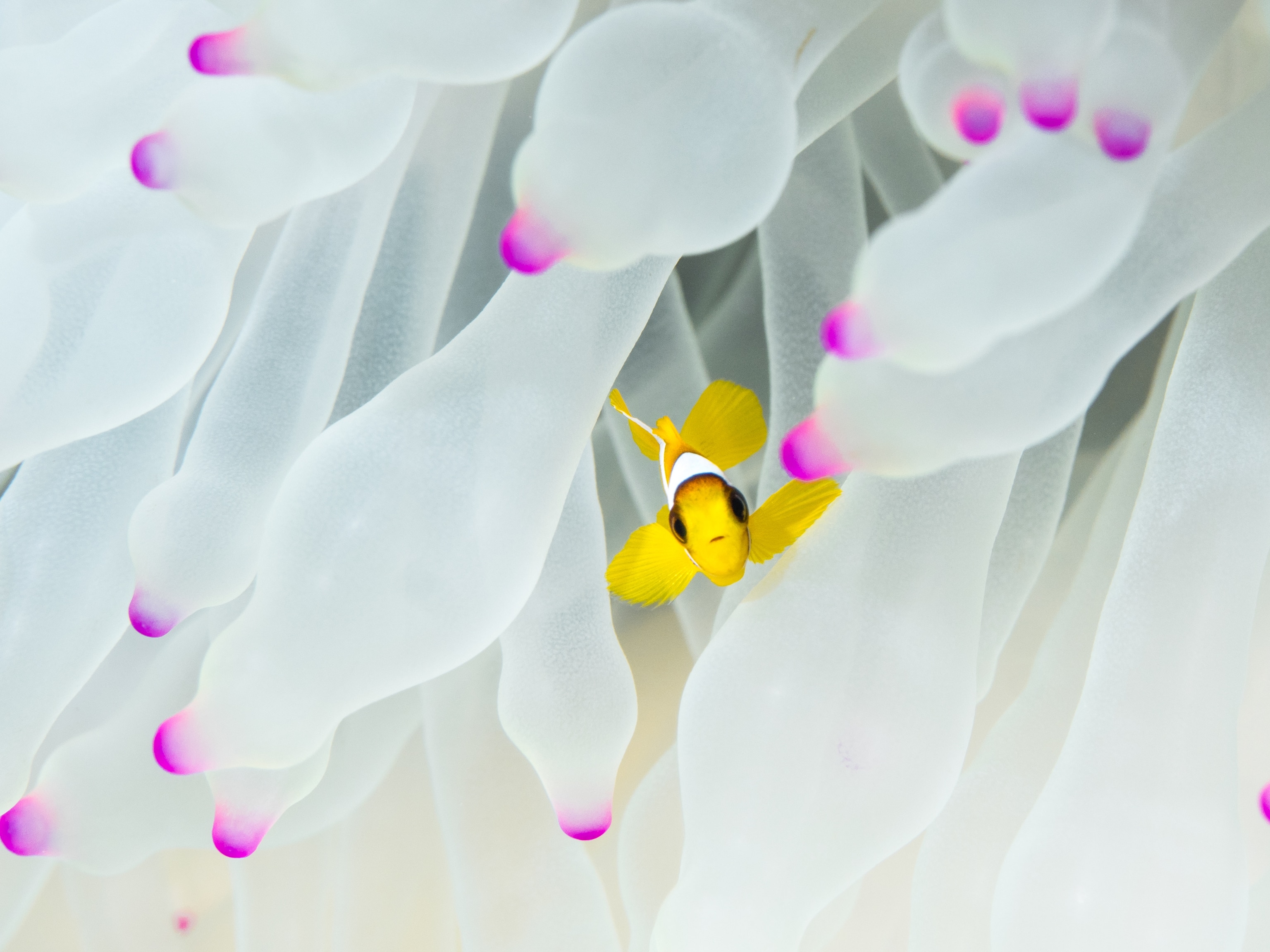
Watch 'Pom-Pom' Crabs Fight with Anemone-Tipped Claws
Crabs can stimulate sea anemones to reproduce asexually—the first known example of such behavior, a new study says.
In the shallows of the Indo-Pacific dwell tiny cheerleaders: Crabs that hold sea anemones on each of their claws, earning them the nickname pom-pom crabs.
These colorful and stinging accoutrements, attached to their claws with delicate hooks, likely help the coin-size crustaceans fend off predators. The anemones, in turn, benefit from getting scraps of leftover food from the crab. (Also see "Natural Bling: 6 Amazing Animals That Decorate Themselves.")
Unlike most crabs, which have robust claws used for grabbing, eating, and defense, Lybia crabs have claws like little tweezers—the perfect size and shape for holding anemones.
Now, a new study reveals that when a pom-pom crabs lacks an anemone, it will steal one from another crab. Then, both victim and victor split their single anemone into two, creating identical clones, one for each claw.
Cloning Crab
Over several years, a scientific team observed or collected more than a hundred Lybia leptochelis crabs—each holding a pair of anemones—from the Red Sea in Israel.
At the IUI Marine Laboratory in Eilat, the researchers removed one anemone from a crab, leaving it with a single pom-pom.
“They don’t give up their anemones voluntarily,” says study author Yisrael Schnytzer, of Israel's Bar Ilan University.
“We placed them in a petri dish under a microscope and used a pair of small tweezers to slowly and carefully remove the anemones.”
The crab missing an anemone would then tear its remaining anemone into two equal fragments. In a few days, each fragment regenerated into two new clones of the original anemone, according to the study, published January 31 in the journal PeerJ.
This is the first known case of one animal stimulating another animal to reproduce asexually.
Being Crabby
In a second experiment, Schnytzer and colleagues observed what a crab does if it has no anemones at all: They placed a crab without anemones in an aquarium with a crab holding two anemones.
The crabs would proceed to fight, which almost always led to the anemone-less crab stealing an anemone from its opponent. (Read about a sea anemone that lives upside down in sea ice.)
Finally, the researchers analyzed the DNA of anemone pairs taken from wild-caught crabs.
Each crab was found to be holding identical clones, suggesting that the splitting and stealing behaviors observed in the lab are also used to obtain anemones in the wild.
"Extraordinary Adventure of Life"
Schnytzer and his colleagues have many more questions about this strange relationship. For instance, it is still unclear how, where, and when the crabs obtain their anemones.
For instance, the crabs collected in the Red Sea carried a particular species of anemone from the genus Alicia; remarkably, despite years of searching, the team was unable to find any of these anemones living freely and not in the grasp of a crab. (See more pictures of colorful sea creatures.)
“Presumably, although splitting and theft occur in nature, they do not represent the full picture of how these crabs acquire their anemones,” says Schnytzer.
The study raises also questions about how the anemone-crab relationship evolved, says Daniѐle Guinot, a crab expert at the Museum of Natural History in Paris, France.
In this relationship, holding anemones seems to be necessary for the crabs, says Guinot, who was not involved in the research.
“The experiments were well imagined and carefully conducted,” she adds.
"It is another example of the extraordinary adventure of life.”





